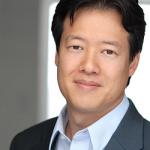
As Managing Director of T2 Venture Capital, a Silicon Valley venture firm that helps build “innovation ecosystems” around the globe, Victor Hwang knows quite a lot about what it takes to create an environment where high-tech startups can grow and thrive.
In fact, it’s the subject of his new book – The Rainforest: The Secret to Building the Next Silicon Valley, with co-author Greg Horowitt. We asked Hwang to share some of those insights:
Q: What are the essential ingredients for an area hoping to become the next Silicon Valley?
Hwang: You need both the societal hardware and the human software. The hardware is the basic building blocks: talented people, professional organizations, market policies and good physical infrastructure. But lots of places have that hardware. The harder thing is the software, which is the cultural patterns of behavior. That software consists of diversity; motivations that are more than just “having a job”; trust between strangers; principles of fairness, collaboration and experimentation; and social feedback loops that penalize bad behavior and reward good behavior.
Q: What are the biggest obstacles to replicating Silicon Valley’s success elsewhere?
Hwang: Hardware is easy. Software is hard. It’s easy to throw more money at problems, whether that means funding R&D, investing in startup incubators or accelerators, tax incentives or building campuses. It’s far harder to create communities of people driven by values like trust, fairness, dreaming big and willingness to risk and fail.
Q: What are the most important lessons to emulate from Silicon Valley’s success?
Hwang: Silicon Valley is not driven by mere creative destruction, as many economists say. More importantly, it is a process of creative reassembly, as diverse individuals combine together to tackle real-time problems, then recirculate in the system and recombine in other ways to tackle other problems in the future. Anyone who has ever built a real company knows that assembling a company is much harder than destroying it. As the result of a lucky historical accident, the Valley developed social patterns that made the assembly process a lot easier, faster and cheaper than perhaps anywhere else in the world.
Q: What lessons can we learn from Silicon Valley about how not to create a high-tech or innovation ecosystem?
Hwang: Don’t look at Silicon Valley as it is today, but think about where it came from. Too many people try to emulate only the outward forms of the Valley – capital, universities, skilled labor, geographical proximity — instead of the underlying social interactions that caused its birth in the first place. If you have the social components right, then the flourishing will happen. It just manifests itself in different ways in different places. If we look across history, the same underlying culture that created Silicon Valley is not that different from what caused bursts of creativity and growth in Northern Italy during the Renaissance or the Dutch Golden Age.
Q: What role can, or should, government play in helping create the next Silicon Valley?
Hwang: What we think of as free markets are actually not that free. Even if you remove legal barriers between people and allow them to interact, they are still separated by distances caused by geography, lack of trust, inefficient social networks and differences in culture and language. This is the next frontier for government to explore: how can leaders bridge the remaining interpersonal distances that separate people in social networks? The answer is that micro-level programs can have macro-level effects. Thus, programs that mentor entrepreneurs, create capital funds or assist inventors – the way [in which] they are implemented matters as much as the fact that they are implemented at all. Are the people running them teaching zero-sum behavior, or encouraging positive-sum transactions?
Q: What parts of the U.S. do you think have been most successful so far in either replicating Silicon Valley’s culture or creating a different, but equally valid, center of high-tech innovation – and why have they succeeded?
Hwang:

0 Responses
Stay in touch with the conversation, subscribe to the RSS feed for comments on this post.